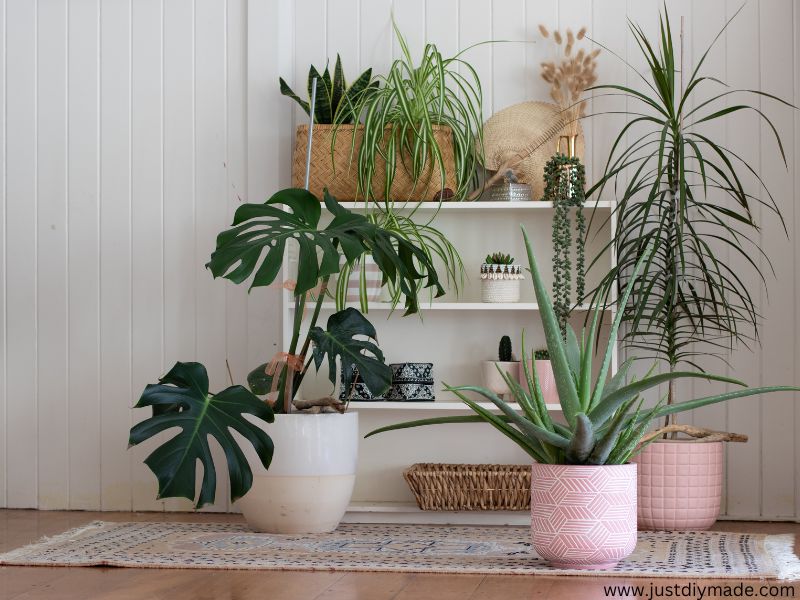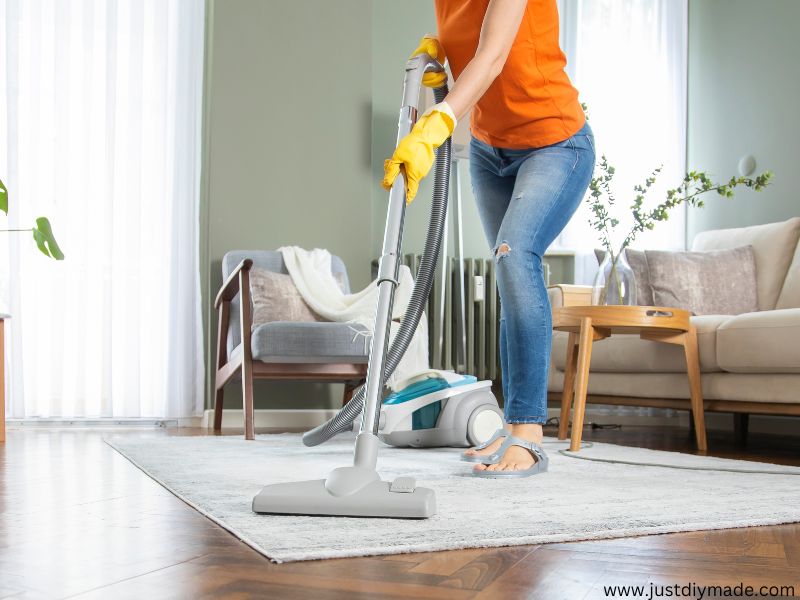This post talks about Can’t-Kill Houseplants for Black Thumbs.
If you’ve always felt a bit hopeless when it comes to keeping houseplants alive, you’re definitely not alone. Not everyone has the magic green thumb, and that’s perfectly okay!
The good news is that some plants are tough as nails and can survive (even thrive) despite a bit of neglect or a chaotic schedule. These resilient plants are ideal for beginners or anyone who wants the calming benefits of greenery without the fuss.
Below, you’ll find 10 of the best can’t-kill houseplants, complete with easy care tips, common problems, and why they’re perfect for “black thumbs.” Even if your space is bright or dim, dry or humid, busy or forgetful, these plants have got your back.
1. Snake Plant (Sansevieria)
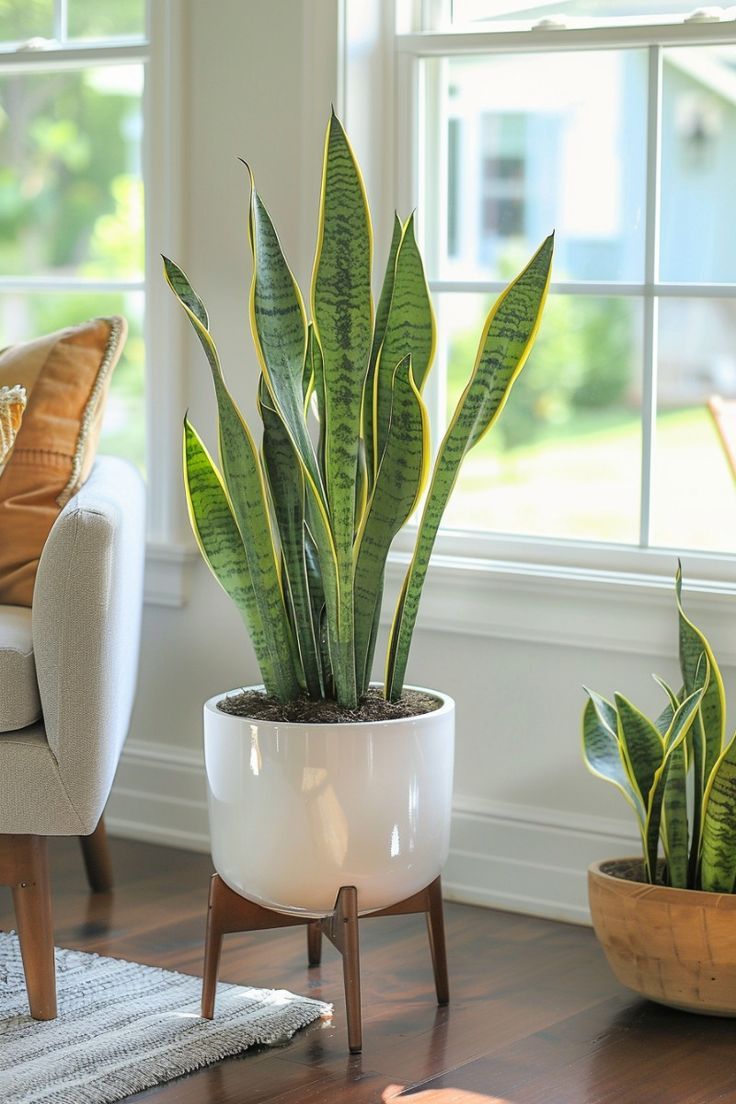
Why it’s great:
The snake plant, sometimes called mother-in-law’s tongue, is legendary for being nearly impossible to kill. Its stiff, sword-shaped leaves stand tall and proud, usually striped with green and yellow.
Beyond being tough, it’s also an excellent air purifier, removing toxins like formaldehyde from indoor air.
Care tips:
- Light: Snake plants are incredibly adaptable. They can handle bright indirect light, low light, and everything in between. However, they grow fastest and look their best in moderate to bright indirect light. Avoid direct sunlight, which can scorch the leaves.
- Water: These plants are succulents and store water in their leaves, so they need very little watering. Water deeply but infrequently—about every 2-3 weeks. Always let the soil dry out completely between waterings to prevent root rot, which is their most common problem.
- Temperature & Humidity: Snake plants prefer temperatures between 60-85°F (15-29°C). They tolerate dry indoor air well, which makes them perfect for homes with heating or air conditioning.
- Other tips: Avoid letting water sit in the rosette of the leaves. Also, snake plants grow slowly, so don’t worry if you don’t see much change month-to-month.
Common problems:
- Overwatering is the main cause of death. Signs include mushy, yellowing leaves and a foul smell from the soil.
- Brown tips can appear if the plant is exposed to drafts or cold air.
2. ZZ Plant (Zamioculcas zamiifolia)
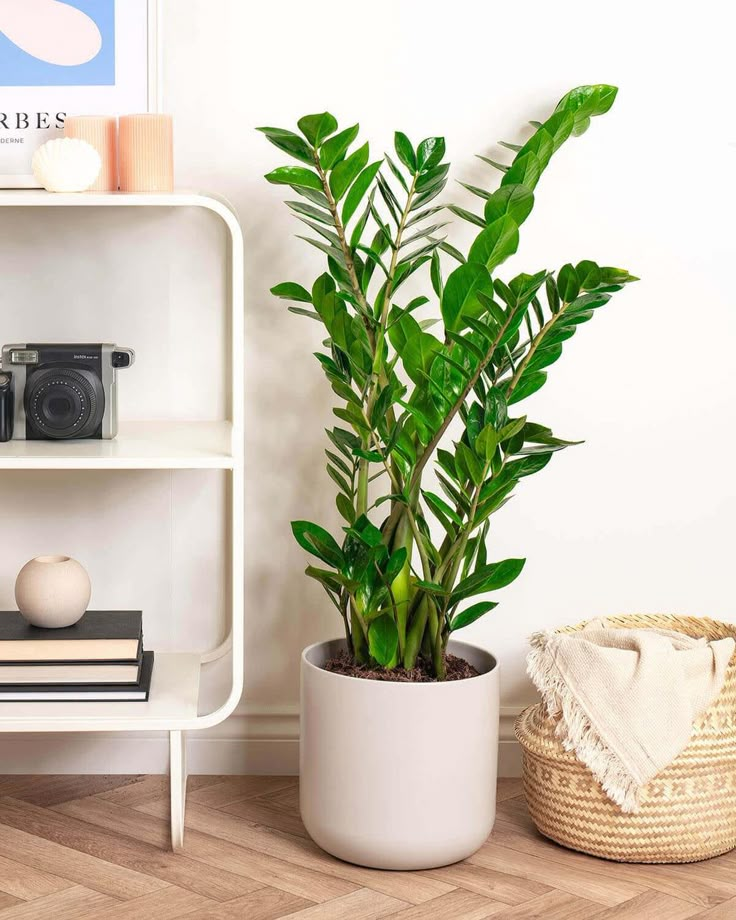
Why it’s great:
The ZZ plant is a glossy-leaved beauty that’s earned a reputation for being almost impossible to kill. It thrives on neglect and tolerates poor lighting and dry conditions. It’s perfect for offices, bathrooms, and any low-light area where other plants might give up.
Care tips:
- Light: ZZ plants grow best in low to bright indirect light but never direct sunlight, which can scorch their shiny leaves. They can even survive under fluorescent office lights.
- Water: Water only when the soil is completely dry—this usually means once every 2-3 weeks. Their thick, fleshy stems store water, so they don’t need frequent watering. Overwatering can lead to root rot.
- Temperature & Humidity: They like typical room temperatures (65-75°F/18-24°C) and can tolerate average humidity levels.
- Other tips: Wipe leaves occasionally with a damp cloth to keep their shiny finish and help them absorb light better.
Common problems:
- Root rot caused by overwatering.
- Leaf yellowing if light is too low for extended periods.
3. Pothos (Epipremnum aureum)
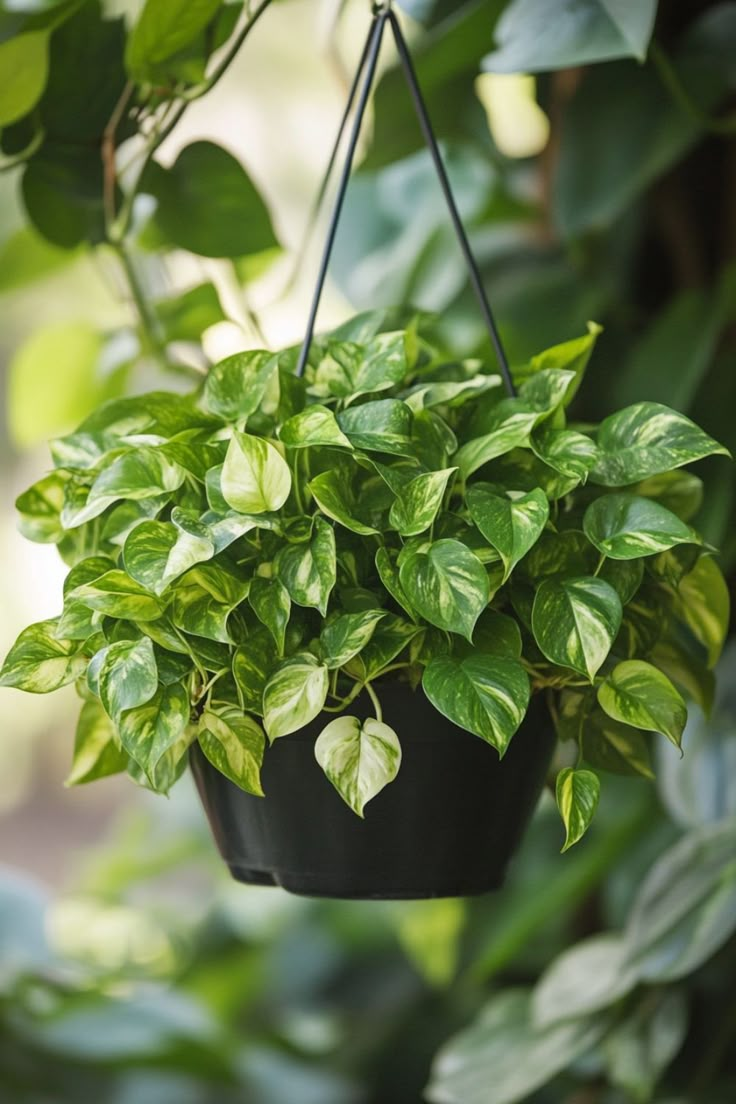
Why it’s great:
Pothos, often called devil’s ivy, is an incredibly versatile and fast-growing vine. It looks lush and vibrant with its heart-shaped leaves, often variegated in green, yellow, or white. It’s ideal for hanging baskets, shelves, or training up a trellis.
Care tips:
- Light: Thrives in low to bright indirect light. It’s very tolerant of fluorescent lighting, making it perfect for offices or rooms with minimal natural light. Direct sunlight can burn the leaves, so avoid it.
- Water: Water when the top inch of soil feels dry. It’s better to underwater than overwater; drying out encourages healthy root growth. Usually, watering every 1-2 weeks works well.
- Temperature & Humidity: Pothos prefers temperatures between 65-85°F (18-29°C) and average humidity. They do fine in dry air but enjoy occasional misting.
- Other tips: Prune regularly to keep it bushy and prevent legginess. You can propagate pothos easily by cutting stems and rooting them in water.
Common problems:
- Yellowing leaves due to overwatering or low light.
- Brown tips from dry air or inconsistent watering.
4. Spider Plant (Chlorophytum comosum)

Why it’s great:
Spider plants are famous for their arching, narrow leaves with white stripes, and their “spiderettes” — tiny baby plants that dangle from long stems. They’re fast growers and great air purifiers.
Care tips:
- Light: Prefers bright, indirect light but tolerates lower light levels. Avoid harsh direct sunlight, which can scorch leaves.
- Water: Keep soil evenly moist but not soggy. Water about once a week or when the top inch of soil dries out. Spider plants can tolerate occasional missed watering but don’t like to dry out completely for long.
- Temperature & Humidity: They prefer temperatures between 55-80°F (13-27°C) and like moderate humidity, though they tolerate normal indoor air.
- Other tips: Remove brown tips by trimming. Spider plants appreciate a monthly feeding with a balanced fertilizer during growing season.
Common problems:
- Brown leaf tips from fluoride or chlorine in tap water or inconsistent watering.
- Root rot if overwatered or planted in poorly draining soil.
5. Peace Lily (Spathiphyllum)
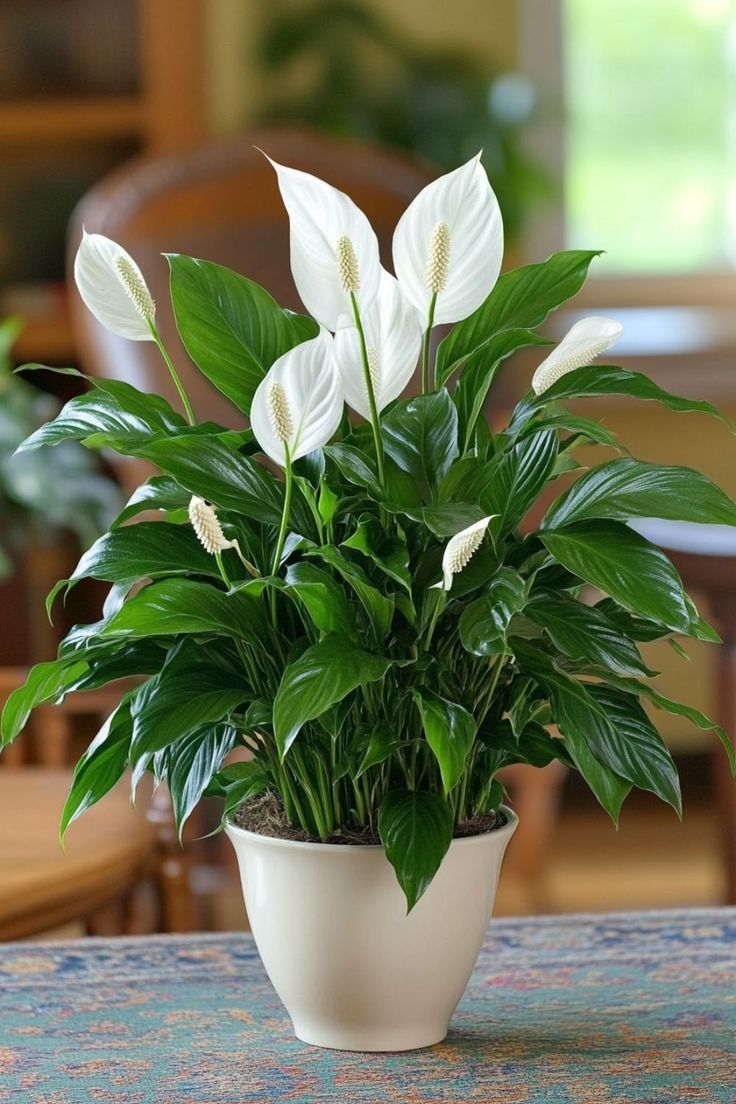
Why it’s great:
Peace lilies are elegant plants with glossy, deep green leaves and striking white flowers that can bloom indoors. They’re excellent for improving indoor air quality and thrive in shady spots.
Care tips:
- Light: Do best in low to medium indirect light. They can survive in dim corners but won’t flower without some indirect light. Avoid direct sun, which causes leaf burn.
- Water: Keep soil consistently moist but not waterlogged. Water when the top inch feels dry. They show signs of thirst quickly by drooping leaves—water immediately when you see this.
- Temperature & Humidity: Prefer 65-80°F (18-27°C) and appreciate higher humidity. Mist occasionally if air is dry.
- Other tips: Wipe leaves to keep them dust-free and healthy. Fertilize monthly in spring and summer for better blooms.
Common problems:
- Yellow leaves if overwatered or rootbound.
- Brown leaf tips from dry air or fluoride in water.
6. Cast Iron Plant (Aspidistra elatior)

Why it’s great:
The cast iron plant lives up to its name by being incredibly durable. It can survive neglect, low light, temperature swings, and even drought. Its large, dark green leaves add a bold look to any room.
Care tips:
- Light: Can grow in very low light, even near north-facing windows or in shaded corners. Avoid direct sun.
- Water: Water every 1-2 weeks, letting the soil dry out between waterings. It tolerates irregular watering well, perfect for forgetful plant owners.
- Temperature & Humidity: Thrives in 50-85°F (10-29°C) and tolerates dry air.
- Other tips: It’s a slow grower, so patience is key. Clean leaves occasionally to remove dust.
Common problems:
- Yellowing leaves usually mean overwatering or too much light.
- Brown leaf tips can occur in very dry air.
7. Aloe Vera

Why it’s great:
Besides being useful for soothing burns and skin irritations, aloe vera is a hardy succulent that’s simple to grow indoors. Its thick, spiky leaves store water, so it can tolerate drought conditions.
Care tips:
- Light: Prefers bright, indirect sunlight and can tolerate some direct sun. Avoid very low light as it can weaken the plant.
- Water: Water deeply but infrequently—once every 3 weeks or so, allowing the soil to dry completely. Overwatering is the biggest risk.
- Temperature & Humidity: Likes temperatures between 55-80°F (13-27°C) and dry air.
- Other tips: Use well-draining cactus or succulent soil and a pot with drainage holes.
Common problems:
- Soft, mushy leaves signal overwatering.
- Brown leaf tips may result from too much sun or low humidity.
8. Jade Plant (Crassula ovata)
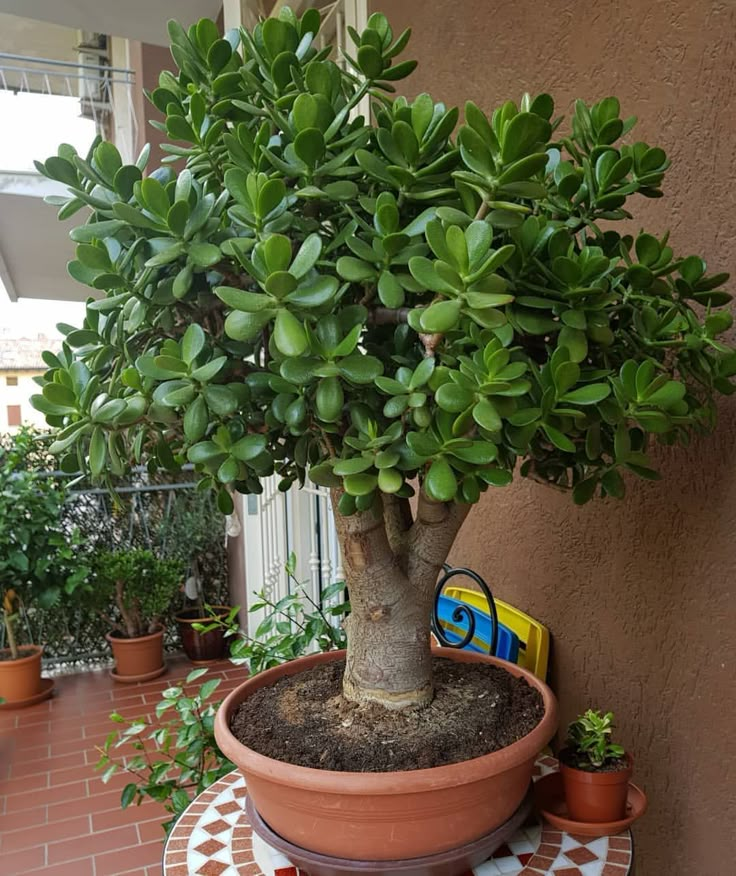
Why it’s great:
Jade plants are classic, easy-care succulents with thick, shiny, oval-shaped leaves. They symbolize good luck and longevity in some cultures and can live for decades.
Care tips:
- Light: Need bright light to thrive, ideally a sunny windowsill with indirect or filtered sun. Too little light causes leggy growth.
- Water: Water when the soil is dry—usually every 2-3 weeks. Avoid letting water sit in the crown or on leaves.
- Temperature & Humidity: Prefer 65-75°F (18-24°C) and dry air.
- Other tips: Rotate the plant occasionally for even growth. Prune leggy stems to promote bushier growth.
Common problems:
- Leaf drop from overwatering or sudden temperature changes.
- Stretching or pale leaves from insufficient light.
9. Rubber Plant (Ficus elastica)
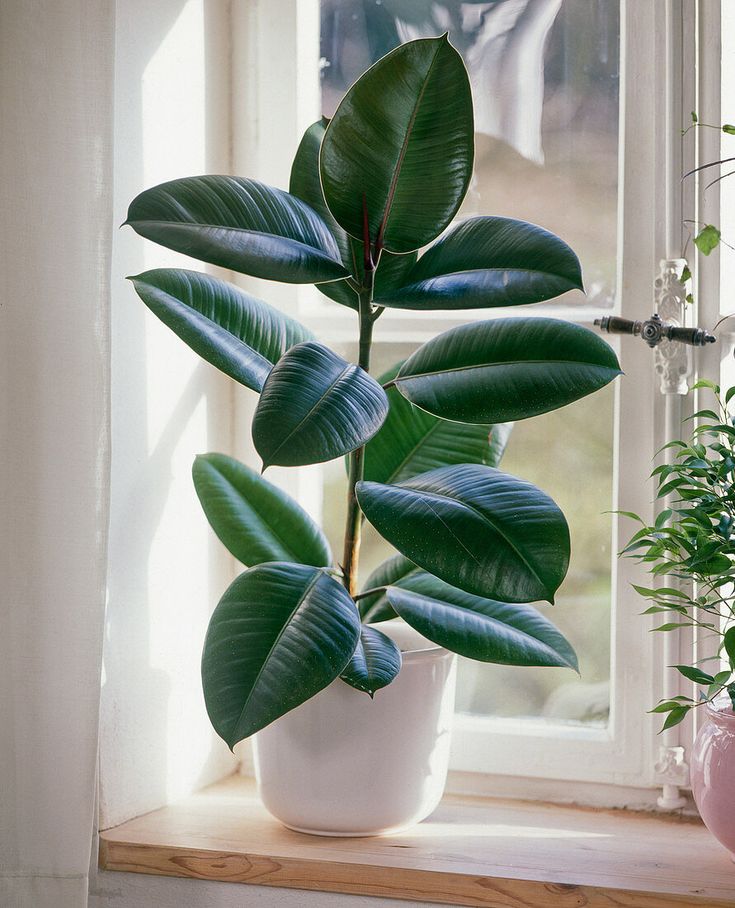
Why it’s great:
Rubber plants have bold, glossy leaves that make a statement. They can grow quite tall indoors and tolerate a variety of light conditions. They also improve indoor air quality by filtering toxins.
Care tips:
- Light: Bright, indirect light is ideal. They can adapt to medium light but avoid direct afternoon sun, which can scorch leaves.
- Water: Water when the top inch of soil dries out. They like soil that’s slightly moist but never soggy.
- Temperature & Humidity: Prefer 60-75°F (16-24°C) and moderate humidity.
- Other tips: Wipe leaves regularly to keep their shine. They can drop leaves when stressed but usually bounce back quickly.
Common problems:
- Leaf drop from overwatering, underwatering, or drafts.
- Brown edges from dry air.
10. Dracaena
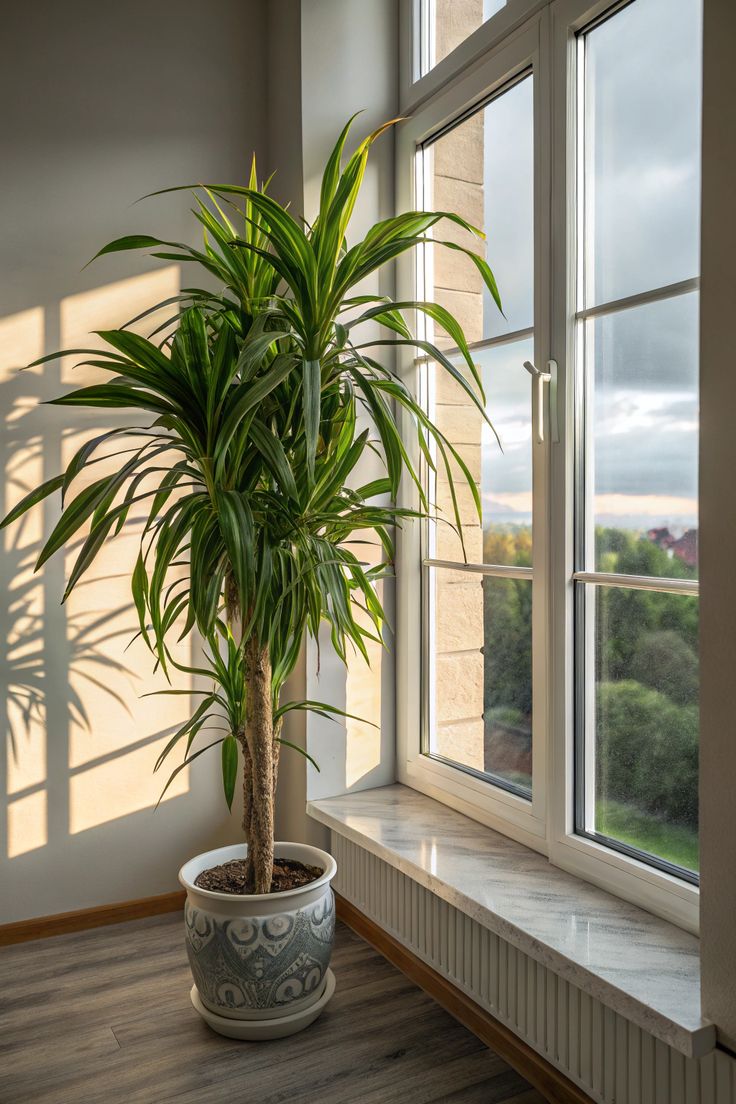
Why it’s great:
Dracaena plants come in many varieties with colorful, patterned leaves. They add height and texture to indoor spaces and are tough enough to survive lower light and occasional neglect.
Care tips:
- Light: Low to bright indirect light. Avoid direct sun which can cause leaf burn.
- Water: Let the top half inch of soil dry out before watering. Overwatering can lead to root rot.
- Temperature & Humidity: Prefer 65-75°F (18-24°C) and appreciate moderate humidity but tolerate normal indoor air.
- Other tips: Remove yellow or dead leaves to keep the plant looking neat. Feed monthly during the growing season with a balanced fertilizer.
Common problems:
- Leaf browning from fluoride in tap water or dry air.
- Root rot from overwatering.
Final Thoughts
Choosing plants that fit your lifestyle is the key to success.
These 10 can’t-kill houseplants are the perfect starting point if you don’t want to worry about watering schedules, light preferences, or complicated care.
They bring life, color, and even cleaner air into your home with minimal effort.
Remember, every plant benefits from occasional attention, like wiping leaves, checking for pests, or rotating for even light. But if you’re new or just not naturally a plant person, these tough beauties will still flourish—and that’s a win in my book!
You May Also Like:
10 Vegetables That Grow in Shade
